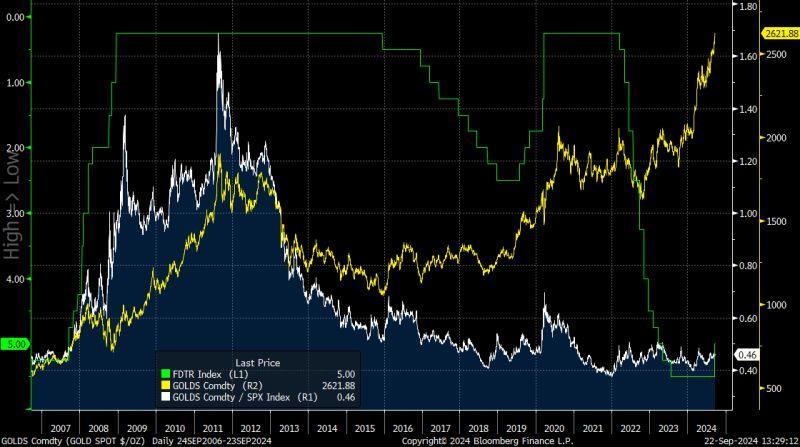In 1929, the average US house price was around $6k.
10 kg of Gold was worth $7k - hence it was enough to buy you the average house in the US.
In 2024, the average US house price is around $500k.
10kg of Gold are worth more than $700k - still more than enough to buy you the average US house.
So, while house prices measured in USD exploded over the last decades it's safe to say they ended up unchanged when measured in Gold.
Or, in other words: over a very long time period, Gold does a good job in preserving your inflation-adjusted purchasing power.
But why?
Because while we can freely expand our fiat money supply, the same is not true for gold - and so when you measure most assets in gold rather than in USD, your perspective changes.
Our monetary system allows us to freely print new fiat money through the process of credit creation.
And the housing market relies on one of the biggest credit creation machines in the world: mortgages.
You see, especially over the last 50 years most developed economies have applied the same model: lower and lower interest rates, more and more leverage - either through government or private sector debt.
This has allowed the economy and asset markets to keep flourishing despite ageing demographics and declining productivity.
Being able to take out a mortgage at lower and lower interest rates encourages the process of credit creation: the same amount of salary ''allows'' you to take on a bigger mortgage, and so you can bid house prices higher and higher.
Simply speaking: more credit at lower rates pushes house prices (in USD terms) higher over time.
But as new credit generates new fiat currency, this also means the amount of fiat money in the system explodes higher.
And that's it.
That's why when you measure house prices against a competing form of money (gold) whose supply can't be expanded you get a flatline.
Of course, this doesn't mean Gold is the perfect asset as it doesn't produce cash flows and holding it comes at an opportunity cost - not being able to earn risk-free (or riskier) rate of returns from other assets.
But once you look at asset prices denominated in Gold, you get an interesting perspective of how our monetary system works.
A fully elastic fiat system is great - if used properly, it allows policymakers to support economies during downturns through the process of money creation.


EZ_money : the real king of assets
EZ_money : cool bar. so true!